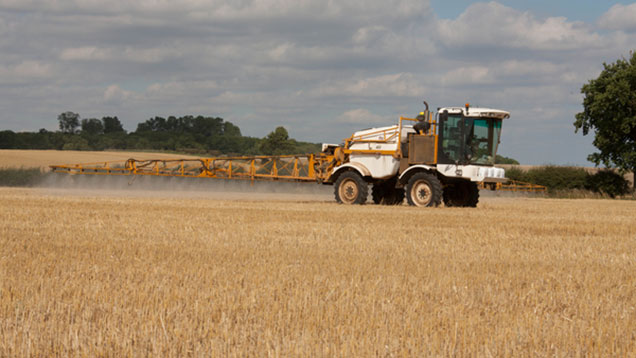Monsanto hits back at glyphosate study’s cancer claims
 ©Tim Scrivener
©Tim Scrivener The manufacturers of glyphosate, the world’s most popular weedkiller, have rejected claims it “probably causes cancer”.
The International Agency for Research on Cancer (IARC) published a report which concludes that glyphosate, which is marketed by Monsanto under the Roundup brand, is “probably carcinogenic”.
The IARC report, published in the medical journal The Lancet Oncology, also identifies the insecticides malathion and diazinon as “probably carcinogenic to humans”.
See also: Scientists dismiss ‘unreliable’ glyphosate study
Two other insecticides, tetrachlorvinphos, which is banned in the EU, and parathion, which is severely restricted for use, were classified as “possibly carcinogenic”.
The decision by the IARC, the specialised cancer agency of the World Health Organisation (WHO), to reclassify glyphosate as a likely carcinogen has divided scientific opinion and created a lot of reaction within the farming industry.
Monsanto said the IARC report was not supported by scientific data and was based on data previously reviewed and considered by regulatory agencies.
Dr Philip Miller, Monsanto’s vice-president of global regulatory affairs, said: “All labeled uses of glyphosate are safe for human health and supported by one of the most extensive worldwide human health databases ever complied on an agricultural product.
“As recently as January, the German government completed a rigorous, four-year evaluation of glyphosate for the European Union.
“They reviewed the data IARC considered, plus significantly more, and concluded glyphosate was ‘unlikely to pose a carcinogenic risk to humans’.”
Scientists across the world have weighed in with their opinions on the IARC report.
Professor Sir Colin Berry, emeritus professor of pathology at Queen Mary University of London, said:
“I have served on a number of regulatory bodies for the UK, EU and WHO and I am well used to sifting wheat from chaff in the analysis of pesticides. What is missing in this new assessment is balance in the consideration of the studies.
“There are over 60 genotoxicity studies on glyphosate with none showing results that should cause alarm relating to any likely human exposure… The weight of evidence is against carcinogenicity.”
Dr Oliver Jones, senior lecturer in analytical chemistry at RMIT University in Melbourne, Australia, said:
“This sounds scary and IARC evaluations are usually very good, but to me the evidence cited here appears a bit thin.
“People might be interested to know that there are over 70 other things IARC also classifies as ‘probably carcinogenic’, including night shifts. In the highest category of known carcinogens are ‘alcoholic beverages’ and ‘solar radiation’ (sunlight) – along with plutonium.
“So yes, pesticides can be dangerous, but so are many other common things which are also dangerous in sufficient amounts or over long periods of time – the dose makes the poison.
“While absence of evidence is not evidence of absence, this does seem to me to be a precautionary rather than a reactionary change.”
Nick von Westenholz, chief executive of the UK Crop Protection Association, said the IARC report disregarded a substantial body of scientific evidence supporting the conclusion that glyphosate was not a human health risk.
He added: “Looking at the summary, the IARC’s conclusions appear to be the result of an incomplete data review that has omitted key evidence, and so needs to be treated with a significant degree of caution, particularly in light of the wealth of independent evidence demonstrating the safety of glyphosate.
“Pesticides are the most heavily regulated products in Europe. It currently takes around 10 years, costing £150m, to bring an active ingredient to market.
“This regulatory process, involving rigorous scrutiny by independent scientific experts, ensures plant protection products are safe for consumer health, for the people who use them and for the environment.”
The IARC’s report says glyphosate is used in 750 products worldwide, and its use has “increased sharply with the development of genetically modified glyphosate-resistant crop varieties”.

